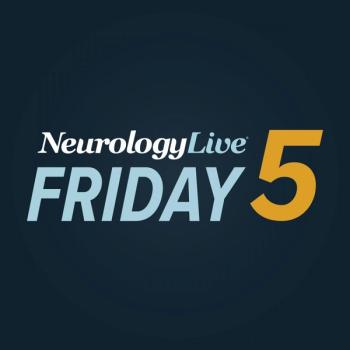
Becker Agent Sevasemten Shows Long-Term Treatment Effects in Latest Extension Data
Key Takeaways
- Sevasemten treatment led to significant NSAA score improvements in BMD patients over 18 months, diverging from expected functional declines.
- The CANYON trial showed sevasemten's significant impact on creatine kinase levels, with FDA guidance for further data submission.
Edgewise Therapeutics reveals promising results for sevasemten, potentially the first approved treatment for Becker muscular dystrophy, enhancing patient outcomes.
Edgewise Therapeutics has announced positive topline data from the MESA open-label extension study, with results showing that treatment with investigational sevasemten led to notable improvements in North Star Ambulatory Assessment (NSAA) scores over an 18-month period in patients with Becker muscular dystrophy (BMD). In addition, the company shared encouraging data from its phase 2 LYNX and FOX trials of Duchenne muscular dystrophy (DMD), as well as completion of a Type C meeting with the FDA, paving a path for sevasemten to become the first approved therapy for BMD.1
MESA, an open-label extension, featured 99% of eligible participants from the previously completed ARCH, CANYON, GRAND CANYON, or DUNE trials. In the latest data update, results showed a 0.8-point increase in NSAA scores among participants from CANYON, the major phase 2 trial of sevasemten, after 18 months of treatment. More notably, those who switched from placebo to sevasemten demonstrated a 0.2-point improvement since their crossover.
Over the 18-month treatment period, patients on the investigational agent showed NSAA scores that diverged from the expected functional declines seen in previously conducted BMD natural history studies. Among those who rolled over from ARCH, an open-label, single-center study, NSAA scores remained stable over 3 years of sevasemten treatment. Above all, the therapy’s safety profile continued to be consistent with the drug remaining favorable among treated patients.
"We are thrilled with the tremendous excitement from physicians and the patient community around the data on sevasemten to date and their unwavering commitment to our ongoing pivotal program," Joanne Donovan, MD, PhD, chief medical officer at Edgewise, said in a statement.1 "We are well positioned to deliver the first ever therapy for individuals with Becker muscular dystrophy."
CANYON, a placebo-controlled, double-blind study,
GRAND CANYON, an extension study of sevasemten lasting 18 months, is expected to have topline data read out in late 2026. This highly-powered study, expected to include 120 patients with BMD, will provide supplemental data to support a future marketing application if results are positive. Notably, the FDA and Edgewise also aligned on NSAA as a clinically meaningful end point for traditional approval.
In addition to promising findings from MESA, the company also read out encouraging early-stage data from LYNX and FOX, 2 phase 2 trials testing sevasemten in patients with DMD. The studies, which aimed to identify a potentially beneficial dose for a future phase 3 trial, showed that sevasemten was well-tolerated in this patient population, with no issues observed across target doses.1
READ MORE:
In the placebo-controlled LYNX trial, which included patients with DMD aged 4-9, results showed that treatment with sevasemten led to consistent observations across functional measures, including Stride Velocity 95th Centile, NSAA, and 4 stair-climb. Notably, the 10 mg dose was identified as most efficacious to be tested in a phase 3 study.
FOX, another placebo-controlled study, tested sevasemten in a cohort of patients with DMD, aged 6-14, who had been previously treated with gene therapy. Coming into the study, this cohort had an average age of over 10 years old and 4 years out from receiving gene therapy. According to Edgewise, the results were encouraging, with data to show that the 10 mg dose has potential to reduce the rate of functional decline. Based on findings from LYNX and FOX, the company is planning to initiate a phase 3 study in 2026 after meeting with the FDA.
To date, sevasemten has shown potential to become the first FDA-approved treatment for BMD, a condition that affects nearly 5000 patients in the U.S. alone. Earlier this year, an
Additional data from the analysis showed that 1-year changes in muscle injury proteins from those on placebo were not significantly different from natural history cohorts, whereas those in the sevasemten subgroup had a significant reduction relative to natural history (P <.001). Those assigned to 10 mg sevasemten also demonstrated these changes over the long-term period, lasting through months 6-12 of the trial.
REFERENCES
1. Edgewise Therapeutics Reports Positive Results on Sevasemten Program for Becker and Duchenne Muscular Dystrophies. News release. Edgewise Therapeutics. June 26, 2025. Accessed June 26, 2025. https://www.prnewswire.com/news-releases/edgewise-therapeutics-reports-positive-results-on-sevasemten-program-for-becker-and-duchenne-muscular-dystrophies-302491562.html
2. Edgewise Therapeutics Announces Positive Topline Results from the CANYON Phase 2 Trial of Sevasemten in Individuals with Becker Muscular Dystrophy (Becker). News release. December 16, 2024. Accessed June 26, 2025. https://www.businesswire.com/news/home/20241216264915/en/Edgewise-Therapeutics-Announces-Positive-Topline-Results-from-the-CANYON-Phase-2-Trial-of-Sevasemten-in-Individuals-with-Becker-Muscular-Dystrophy-Becker
3. Barthel B, Improved Plasma Signature of Contraction-Induced Muscle Injury with Sevasemten in Becker Muscular Dystrophy in the CANYON Phase II Trial. Presented at: 2025 MDA Clinical & Scientific Conference. March 16-19; Dallas, TX. ABSTRACT LB432
Newsletter
Keep your finger on the pulse of neurology—subscribe to NeurologyLive for expert interviews, new data, and breakthrough treatment updates.



































